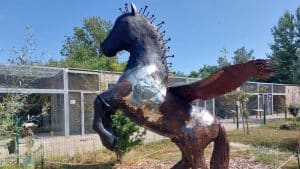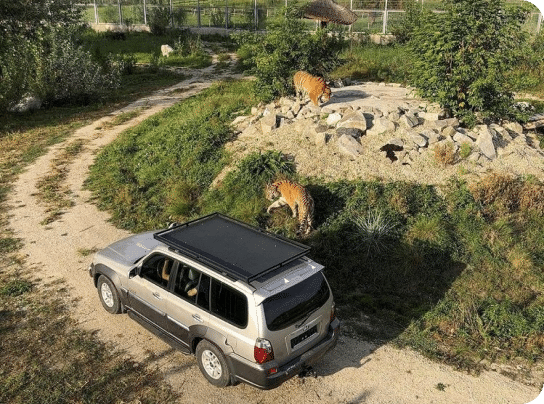Milí naši priaznivci, podporovatelia, návštevníci.
Malkia Park je v apríli 2024 otvorený: utorok – nedeľa, 10:00 – 17:00 h.
Pondelky je Malkia Park zatvorený.
Počas víkendov a sviatkov Vás pozývame na komentované kŕmenia – ako bonus pre návštevníkov zdarma.
Doobedné komentované kŕmenie začína o 10:40 pri vstupe do parku – budeme sa rozprávať o papagájoch a o 11:00 hod sa stretávame pri výbehu leopardov škvrnitých čiernych.
Poobedné komentované kŕmenie začína o 14:30 hod pri výbehu jaguárov amerických.
Spolu s lektorom postupne prejdeme aj k niektorým ďalším zvieratkám.
Komentované kŕmenie bude trvať cca 35 min, zmena programu vyhradená.
Lektor nám porozpráva zaujímavosti o živote zvierat v Malkia Parku, aj vo voľnej prírode a ošetrovatelia pripravia potravu na rôznych miestach vo výbehu.
Je teda veľká šanca, že uvidíte zvieratá aktívnejšie.
Aktuálny program komentovaných kŕmení nájdete tu: Komentované kŕmenie – Malkia Park
Aby sme nezabudli, stále máte šancu pomôcť nám 2% z Vašich daní.
Málo, či veľa, Vaša pomoc sa ráta:)
Aj vďaka Vám majú naši zverenci plné brušká kvalitnej potravy, vykurované vnútorné priestory v chladnom období, zabezpečenú veterinárnu starostlivosť, stálu opateru ošetrovateľov exotických zvierat, enrichmenty, ….
Link na poukázanie 2% z daní nájdete tu: 2% – Malkia OZ (malkiapark.sk)
Aby ste sa vedeli pripraviť vopred, tu sú najbližšie podujatia v Malkia Parku:
01. máj 2024 – Sviatok práce (prednášky o včielkach – včielky Lenka a Petič).
25. 5. 2024 – Deň biodiverzity a korytnačky (prednášky BROZ, SAV).
Pripomeňme si, ktorí z našich zverencov majú narodeniny v apríli:
- mediar svetlochrbtý, Anni: 9. 4. 2021
- ťava dvojhrbá, Kamil: 14. 4. 2015
- leopard obláčikový, Obláčik: 15. 4. 2013
- tiger biely, Carmen: 23. 4. 2017
- vlk dravý kanadský, čierny, Loki, Hella, Valkyra: 29. 4. 2016
- hyena škvrnitá, Laurel a Hardy: 29. 04. 2019
- ťava dvojhrbá, Nela: 30. 4. 2017
- lemur kata: Edo, Deysi, Mary, Winky, Wicky, Julien,
- somár domáci: Peťko, surikata vlnkavá: Timon, serval stepný.
Našim zvieracím oslávencom prajeme veľa zdravia a spokojnosti.
Príďte navštíviť naše zvieratká!
Otváracie hodiny nájdete tu: Malkia Park Kontakt
Link na nákup vstupeniek online nájdete tu: Cenník Malkia Park
Spestriť návštevu parku si môžete po dohode pár dní vopred aj zážitkovými balíkmi – kŕmenie leva, tigra, opíc, samozrejme, pod dohľadom ošetrovateľa zvierat, viac informácií: https://www.malkiapark.sk/zazitky/
Tešíme sa na Vás.















